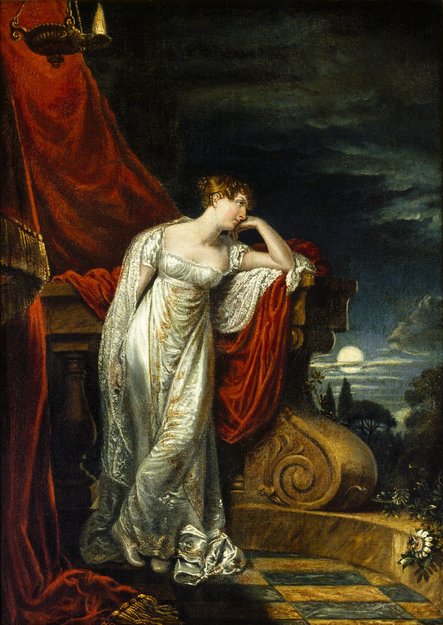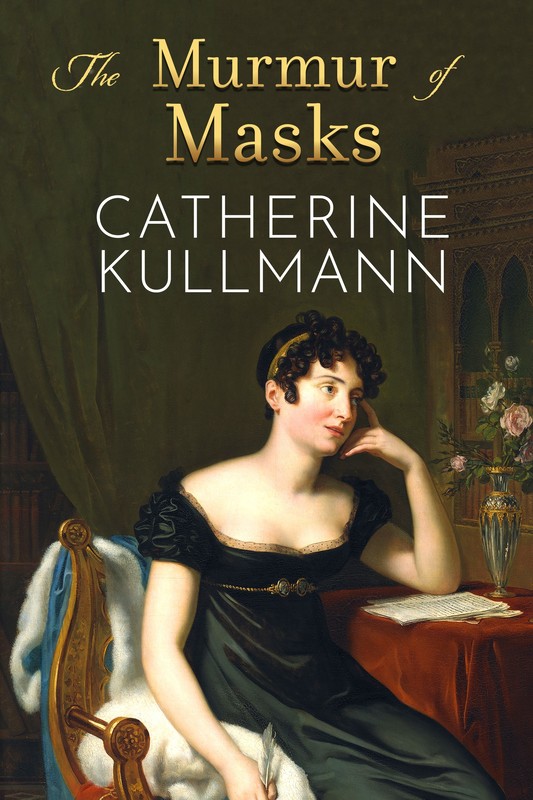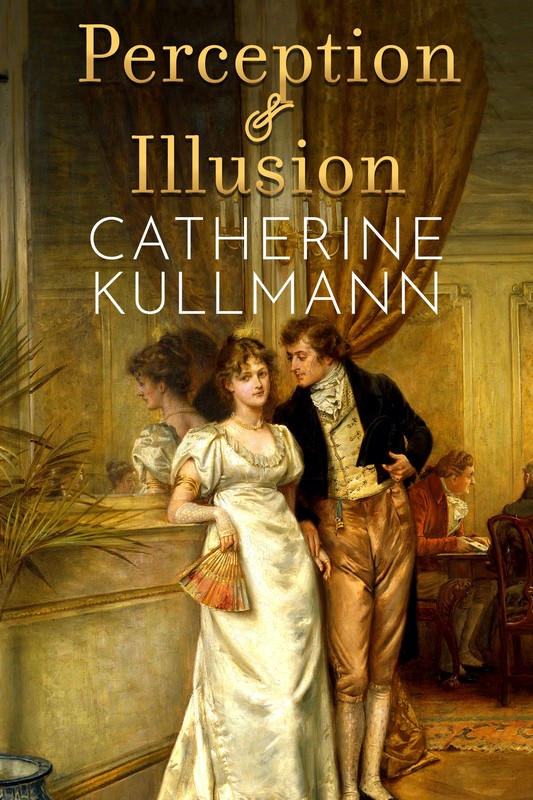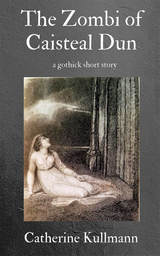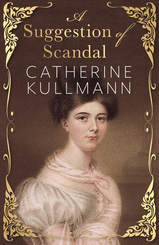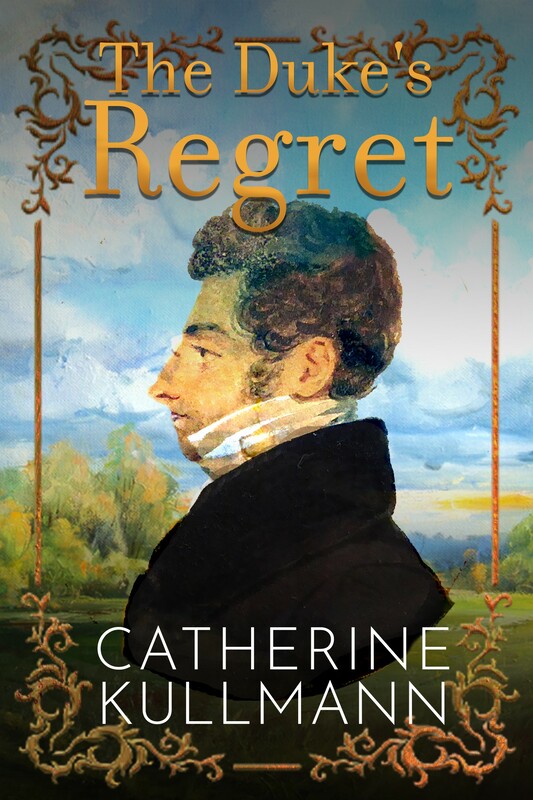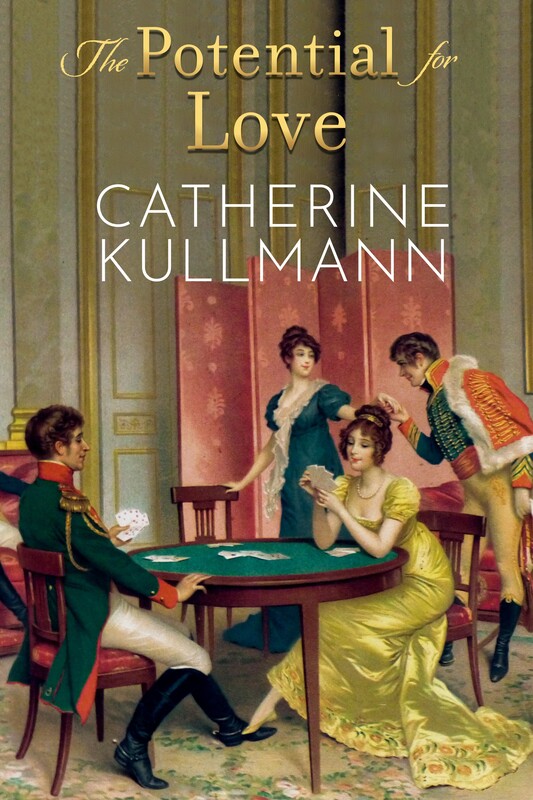Her debut was so successful that by popular demand the performance was repeated the following night instead of the programmed Merry Wives of Windsor, The European Magazine and London Review writing: “This second performance was still more brilliant than the former. The anxieties of a first appearance had disappeared and Miss O’Neill’s talents blazed in unclouded lustre. The applause kept pace with her merits, to which even the Prince Regent came to pay his tribute of admiration.
At the close of the London Season of 1814/15, Miss O’Neill embarked on a summer tour which took in the north of England and Plymouth before ending in Brighton, a country excursion which, according to La Belle Assemblée netted her near eight thousand pounds.
Jane Austen saw her in that first season, writing to Anna Lefroy; We were all at the Play last night to see Miss O’neal in Isabella. I do not think she was quite equal to my expectation. I fancy I want something more than can be. Acting seldom satisfies me. I took two Pocket handkerchiefs but had very little occasion for either. She is an elegant creature however and hugs Mr Younge delightfully.
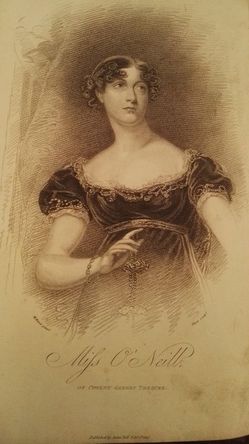
18. (Dec.) Wm Wrixon Becher Esq. M.P., a gentleman of very considerable property and M.P. for Mallow (Co. Cork) to the lovely and accomplished Miss O’Neill. The ceremony was performed by the Hon. and Rev. the Dean of Ossory. Mr B. settles 1000£ a year on the lady; and refuses to take a shilling of her fortune which she has settled on her family as follows: On her father and mother 500£ a year, her brother Robert 300£ a year, her second brother in the 44th regiment 200£ a year and the sum of 5000£ on her sister.
Assuming a return of 5% per annum, a capital sum of £20,000 would be required to provide for the incomes of the bride’s parents and brothers, which together with the amount settled on her sister, presumably as a dowry, suggests that Miss O’Neill’s fortune was at least £25,000 or around two million pounds in today’s terms. According to the laws of the time, on their marriage this would automatically have become her husband’s property had he not waived his right to it in the settlements.
Who was the chivalrous bridegroom who captured such a paragon and could afford to forego the riches she brought with her?
William Wrixon was born on 31 July 1780. He was the eldest son of William Wrixon and Mary, daughter of John Townsend Becher. Through his mother, William was the heir of his uncle Henry who was killed on the day he came of age [21 December 1780] by the bursting of a gun (Burke’s Genealogy, 1836). Henry evidently lived long enough to make a will in favour of his infant nephew and Wrixon subsequently added the name Becher to his own. Although his father predeceased him by only three years, thanks to this inheritance he was independently wealthy all his adult life.
As a young man, William appears to have been a typical member of the Irish Ascendancy. In 1804, aged twenty-five, he was appointed High Sheriff of the County of Cork, the Sovereign's judicial representative in that county, a position his father had held almost thirty years previously. Wrixon senior kept a pack of foxhounds and father and son were founding members and, successively, Masters of the Duhallow Hunt Club. In the general election of 1818 William stood for Parliament on the independent Catholic interest and was returned unopposed for Mallow, ousting his anti-Catholic cousin James Lawrence Cotter. Arrived in London, he joined Brooks’s, sponsored by Lord George Cavendish and Lord Duncannon and presumably moved in the best circles.
We don’t know when and where he and Eliza O’Neill met for the first time. According to Our Actresses: Or, Glances at Stage Favourites, Past and Present (1844), he had known her from her girlhood upwards, —had admired the little budding rose— and then worshipped the full flower.
Sir William and Lady Wrixon Becher had three sons and two daughters. We know no more of their married life together which lasted for thirty years until his death in 1850. She lived for another twenty-two years, dying at the age of eighty-one.
Images: At the Top: Miss O'Neill as Juliet By George Dawe - Folger Shakespeare Library Digital Image Collection http://luna.folger.edu/luna/servlet/s/993opk, CC BY-SA 4.0, https://commons.wikimedia.org/w/index.php?curid=40924016
Below: Miss O'Neill as Belvidera in Otway's Venice Preserved. La Belle Assemblée, January 1816.
